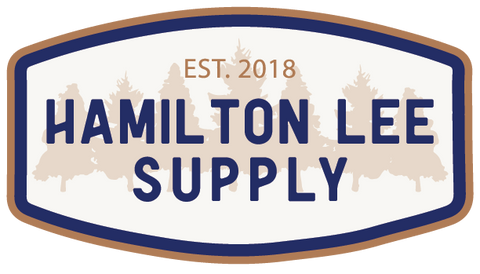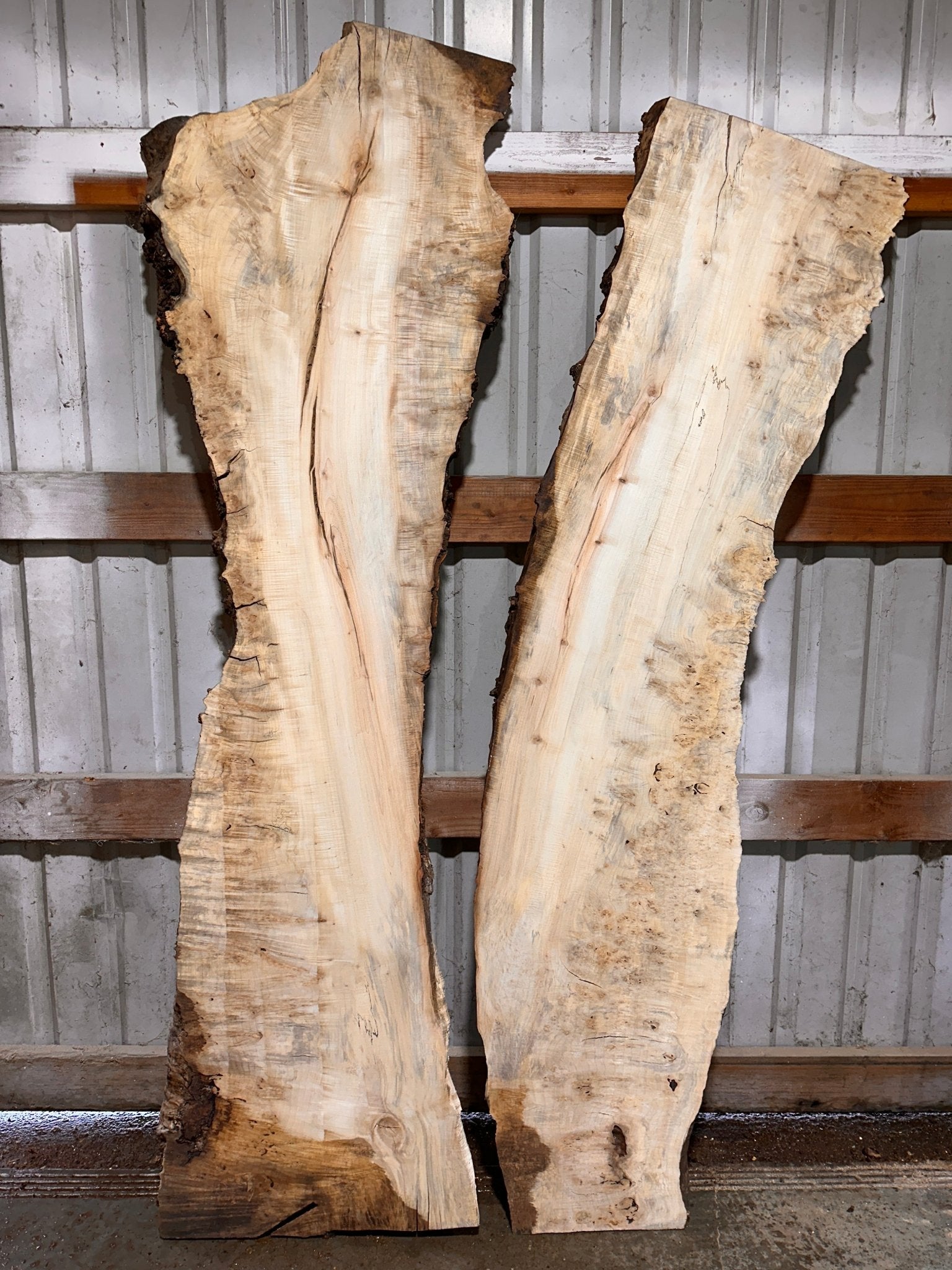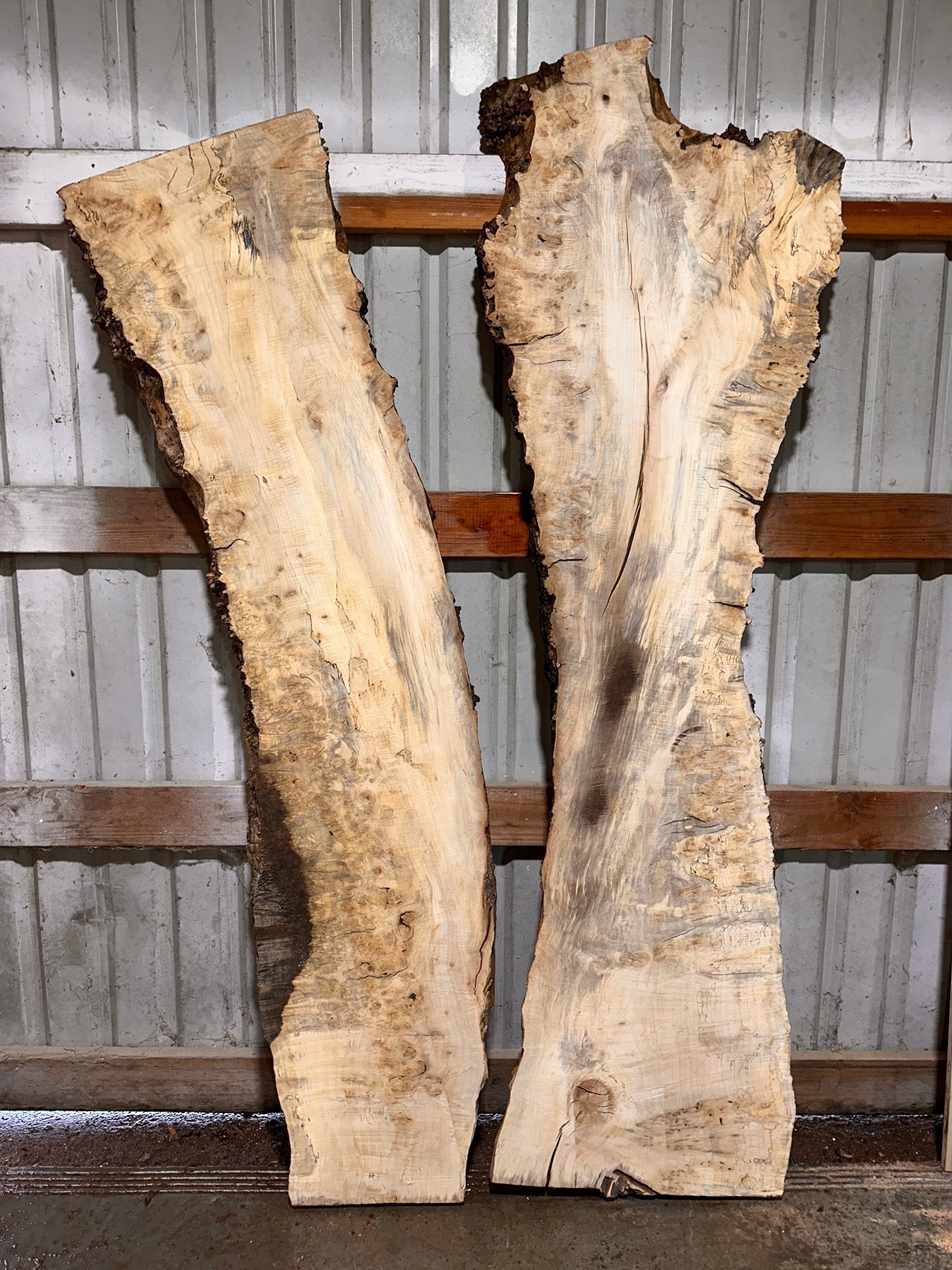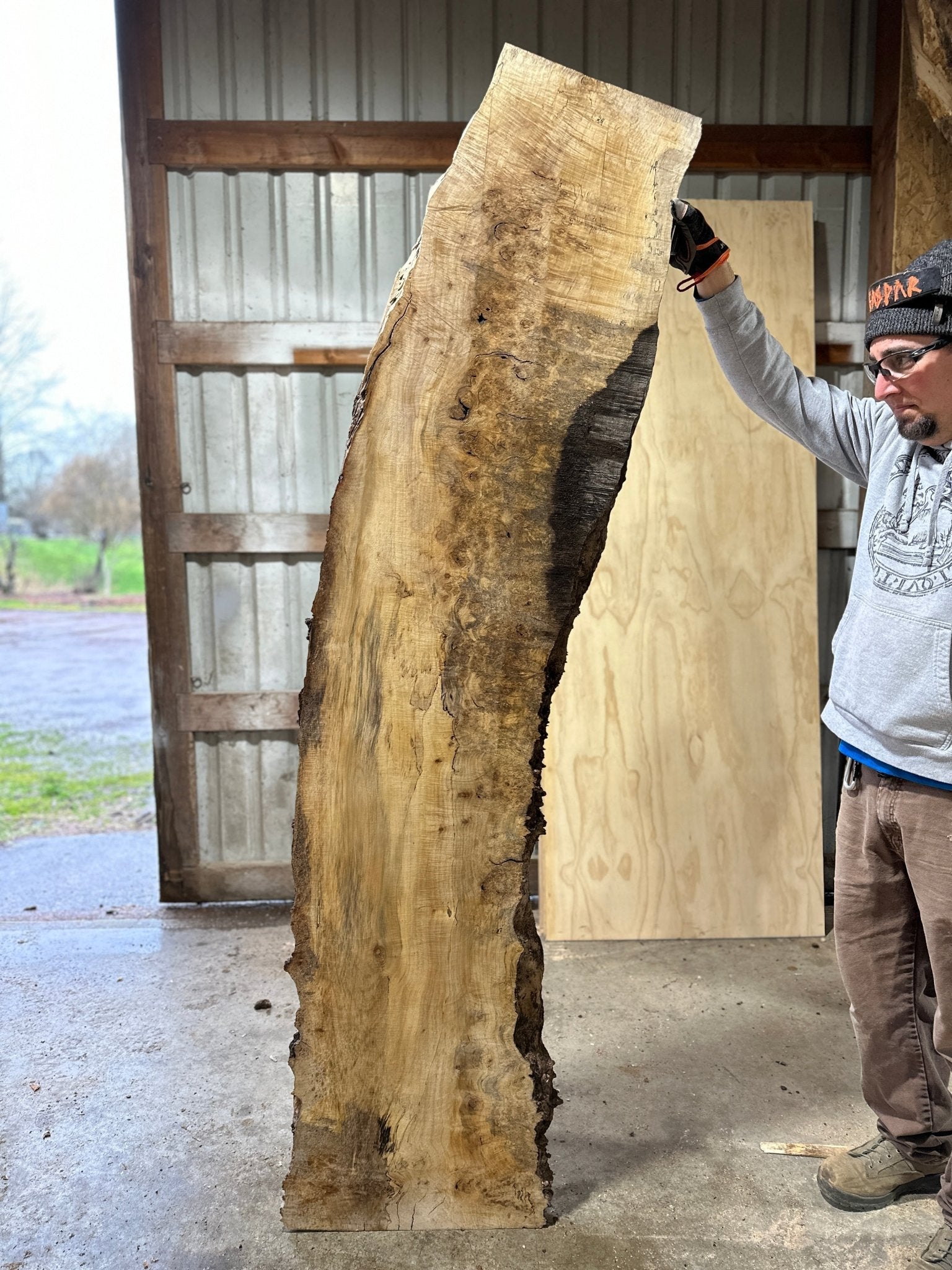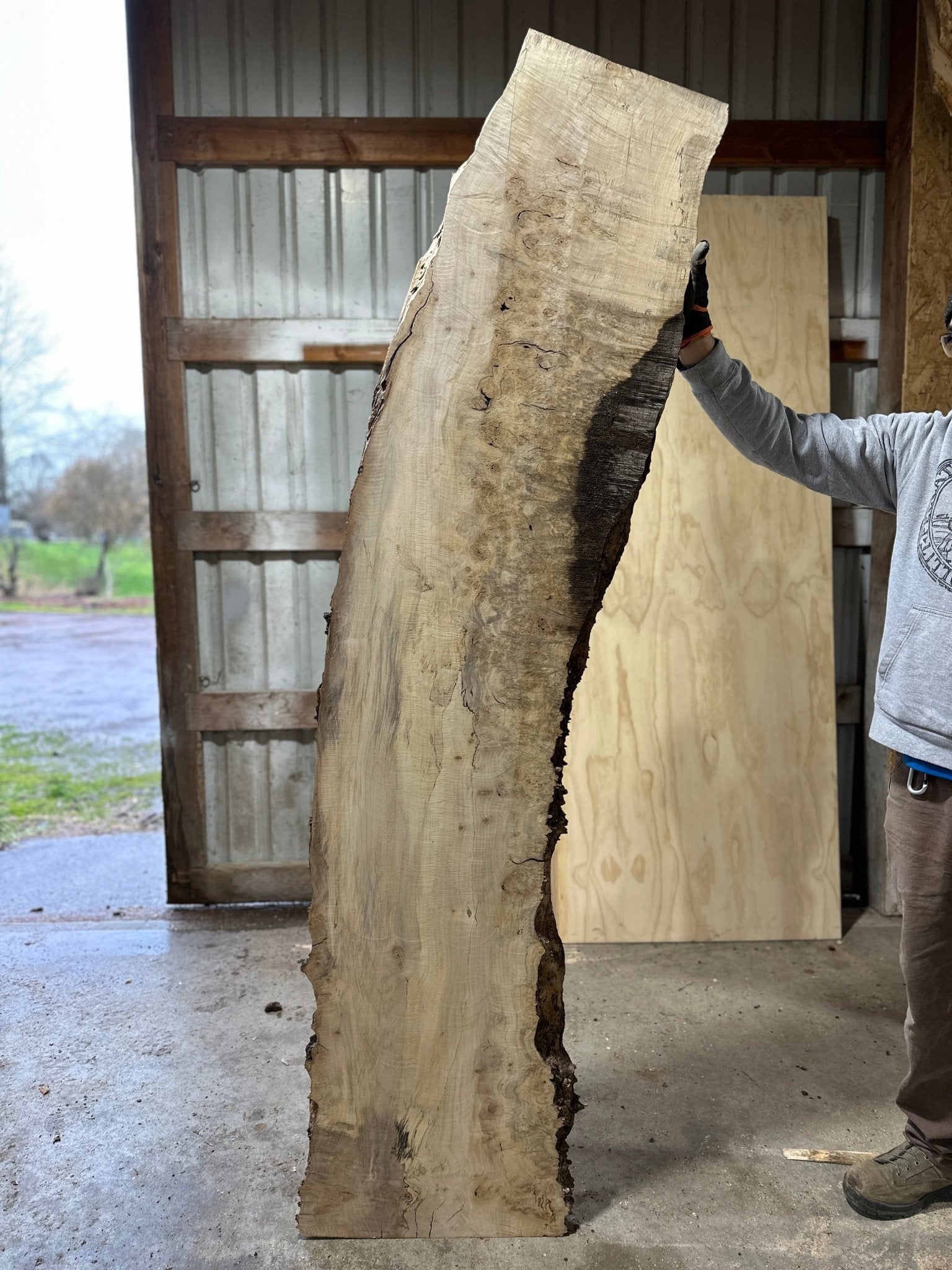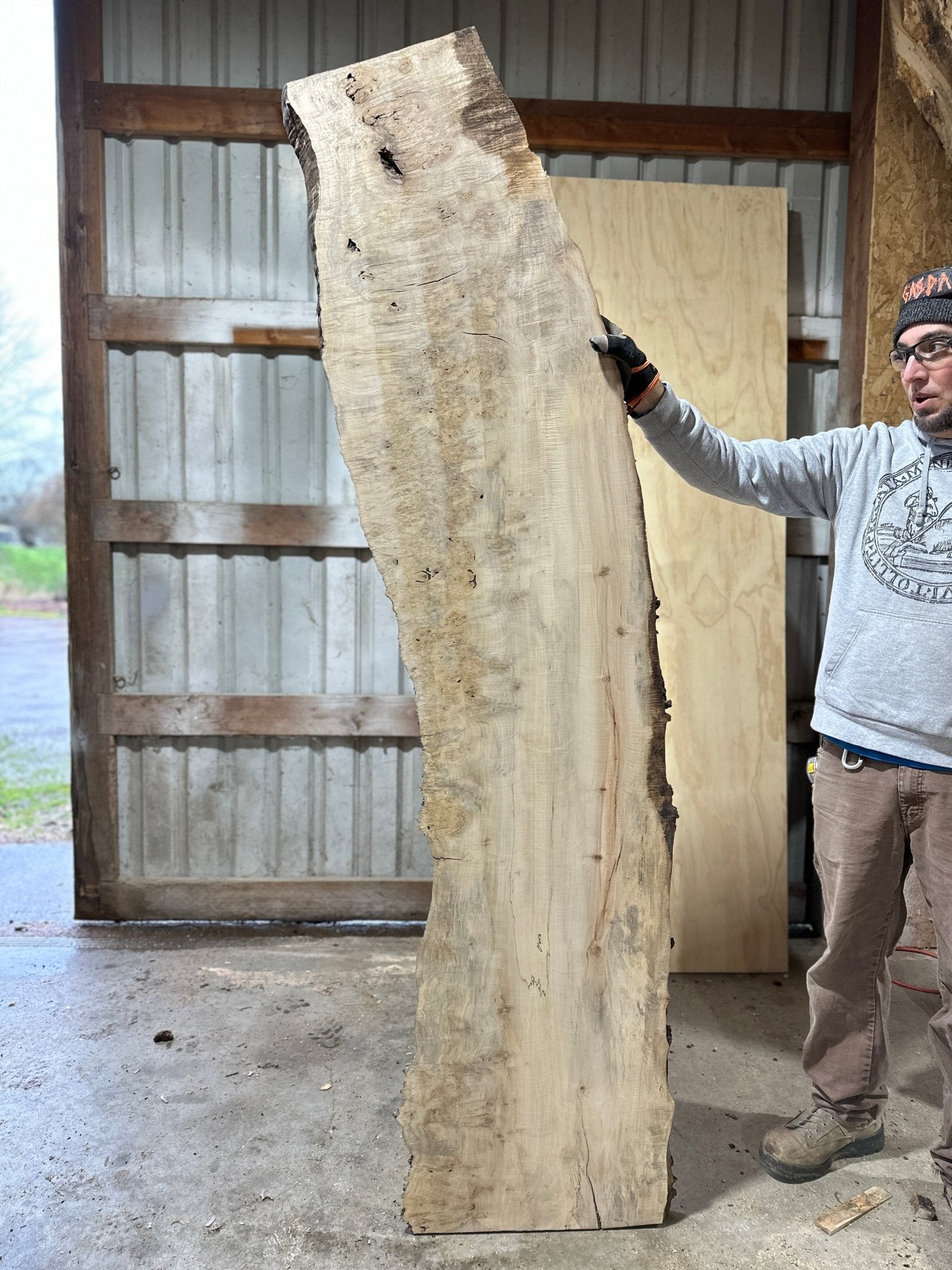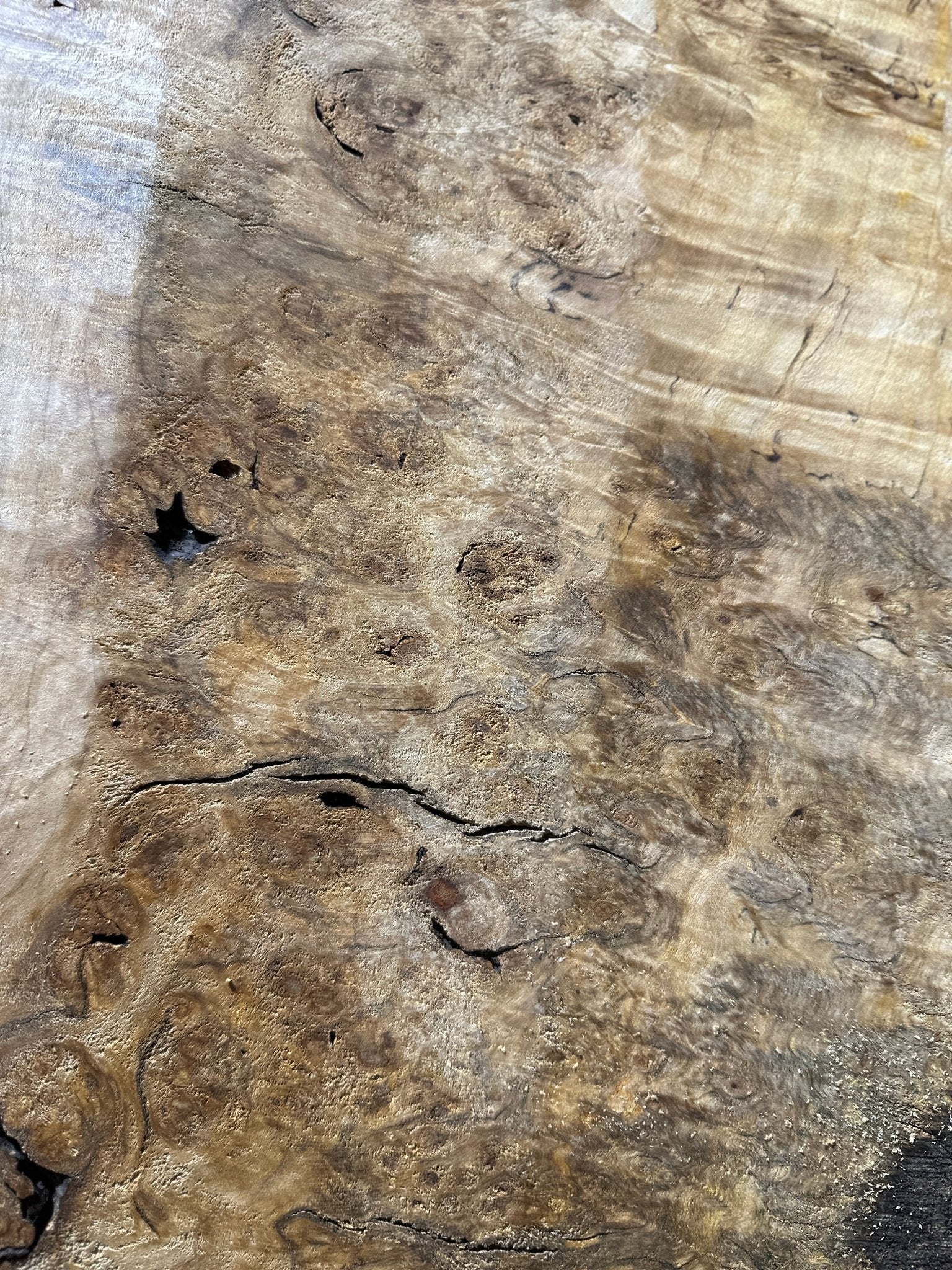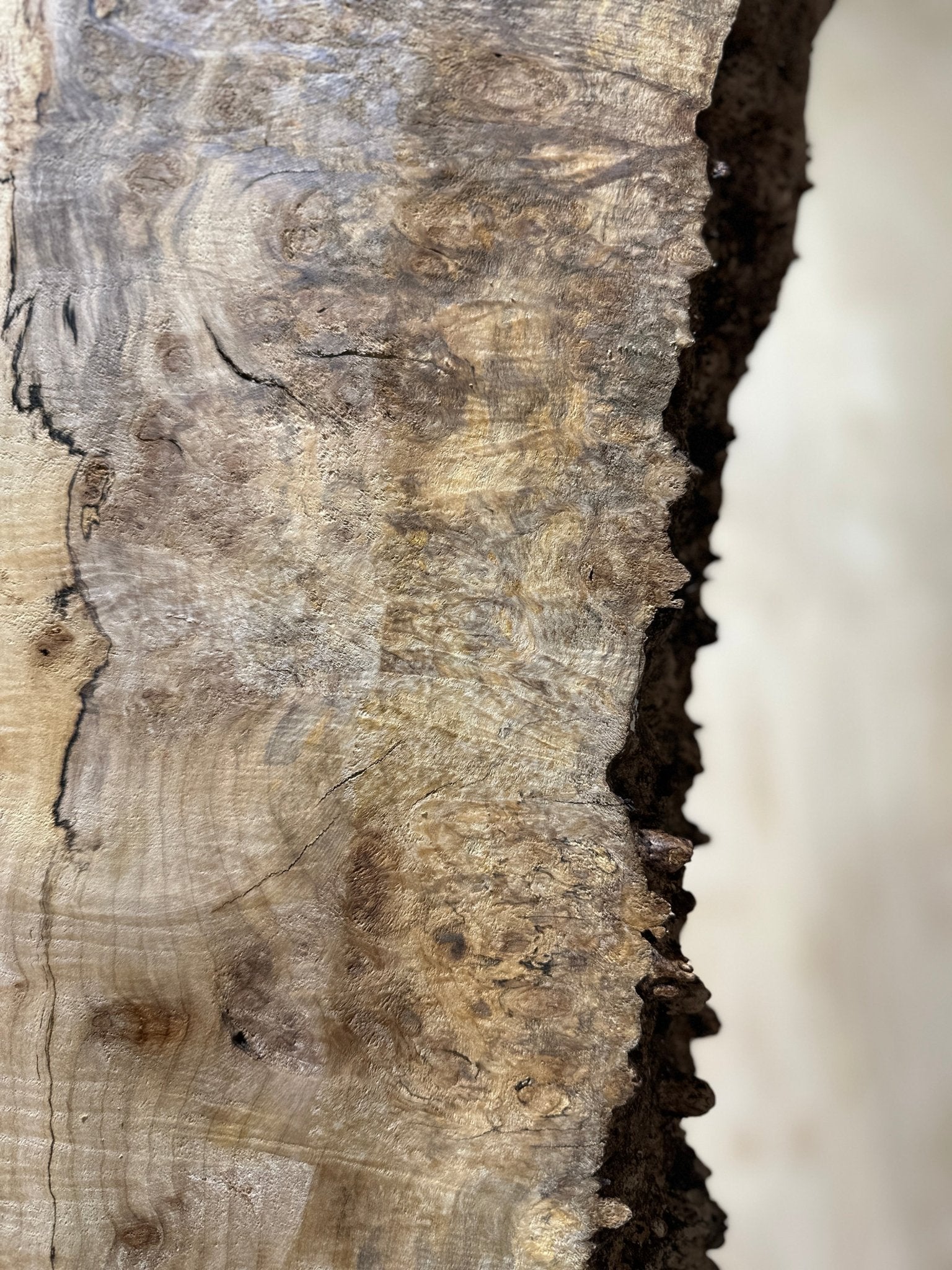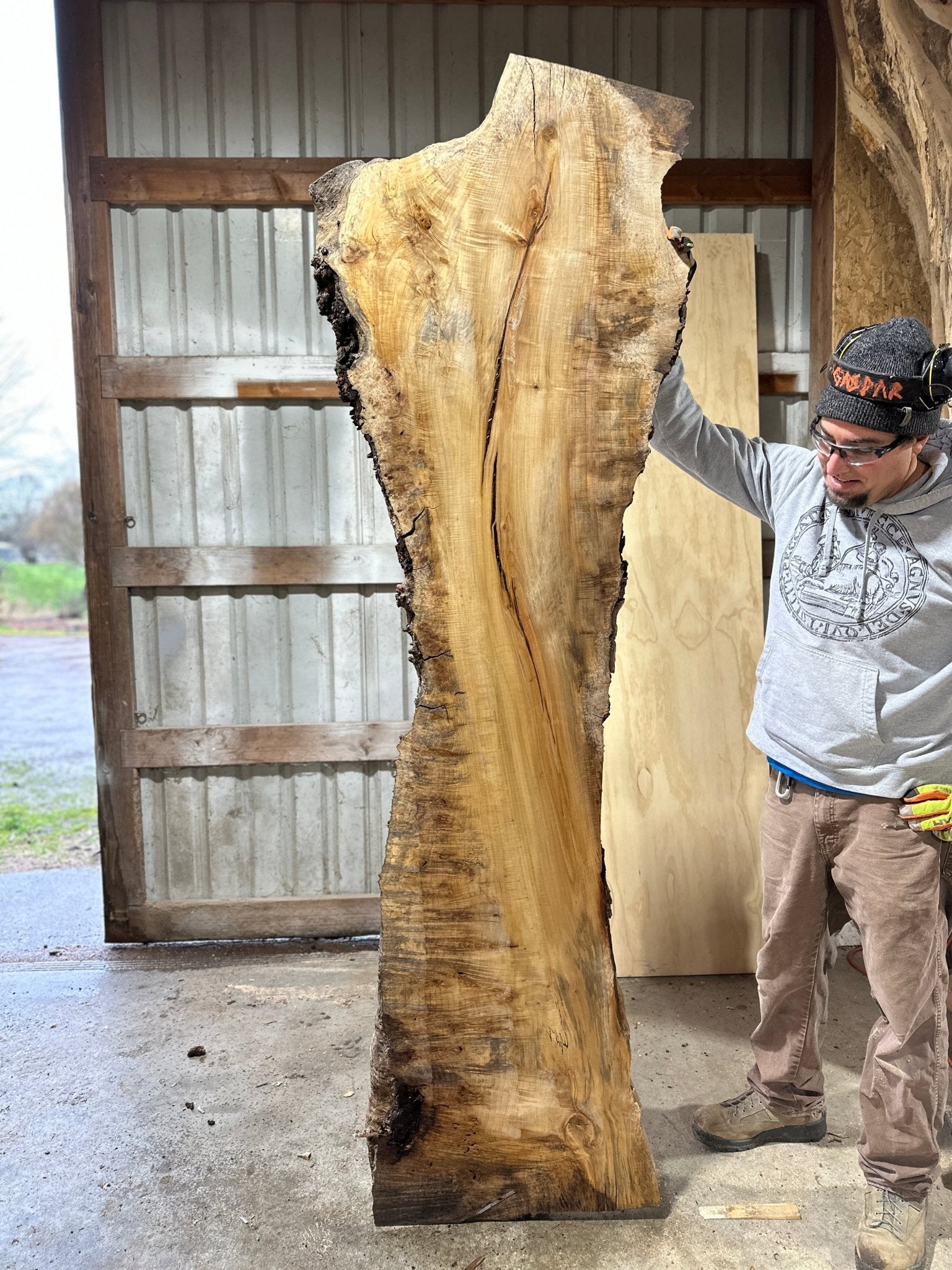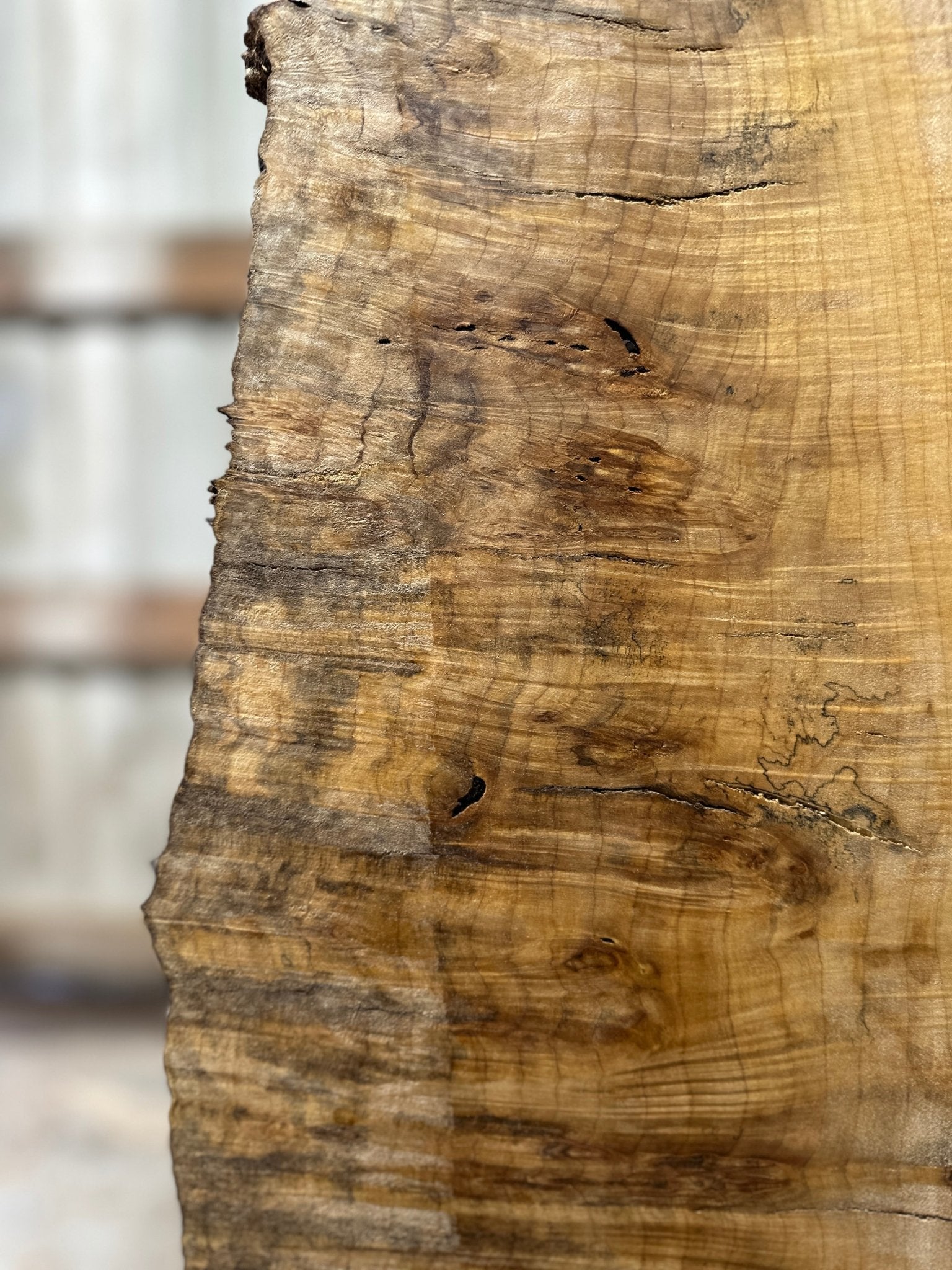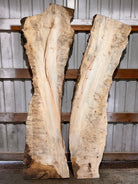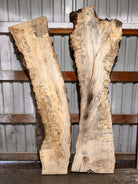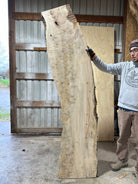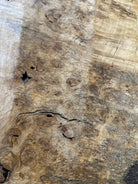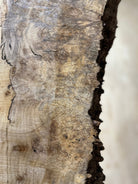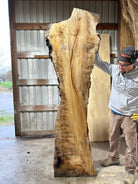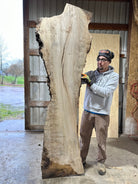LiveEdge Silver Maple
Couldn't load pickup availability
Two paired slabs.
Slab #1:
Species: Silver Maple
Common Names: Silver Maple
SKU: BGCGSM569
Length: 79.75"
Width (Bottom): 17.5"
Width (Middle): 16.75"
Width (Top): 17.75"
Thickness: 1.875"
Board Foot: 18 BDFT
Weight Estimate: 75 Pounds
Geographic Distribution: Native to the North Eastern United States
Janka Hardness: Measures around 700 pounds of force (3,110 Newtons)
Slab #2:
Species: Silver Maple
Common Names: Silver Maple
SKU: BGCGSM570
Length: 86"
Width (Bottom): 19"
Width (Middle): 14.25"
Width (Top): 23"
Thickness: 2"
Board Foot: 22.4 BDFT
Weight Estimate: 93 Pounds
Geographic Distribution: Native to the North Eastern United States
Janka Hardness: Measures around 700 pounds of force (3,110 Newtons)
Character Features: Rare | Combo | Unique Character
| IDry Vacuum Kiln Dried
| Surfaced Flat Project Ready
The Product pictured is the product you'll receive.
Please note that as each tree is unique, no two pieces are alike.
This individuality guarantees that your piece is truly one-of-a-kind.
At Hamilton Lee Supply, we are committed to salvaging and preserving stunning wood materials.
Our focus on sustainability means that every piece of wood tells a story and contributes to a more lasting future.
Shipping Information:
| Product Ships From: Battle Ground, Washington
| Free freighted shipping to the lower 48 United States via Economy Ground or LTL Freight. Orders to Alaska, Hawaii, and Canada may require additional shipping cost.
Once purchased, we will contact you via email or phone to arrange residential/commercial address classification, and whether a liftgate/forklift is required.
If you can't find a slab that perfectly fits your needs among our listed options, feel free to reach out to us directly. We can check our inventory for additional slabs that may suit your preferences.
Contact Information:
| Email: info@hamiltonleesupply.com
| Phone: 360.601.8388
